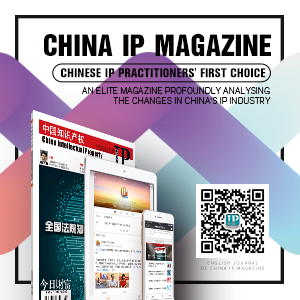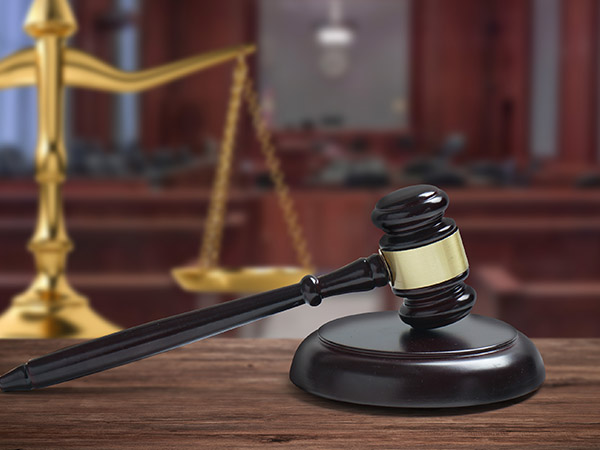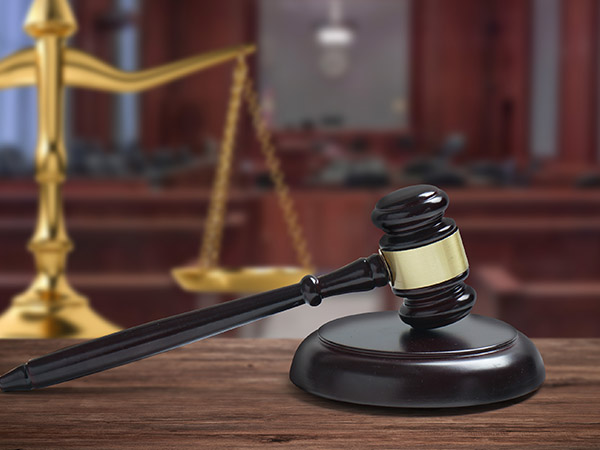Judicial Trial of Intellectual Property is the Promoter of Reform
--an Interview with Su Chi, Former Chief Judge of Beijing Intellectual Property Court and Director of Beijing Intellectual Property Law Research Society
By Doris Li, China IP
Pioneer · Pusher · Witness ·
In 1977, Su Chi was enrolled in the Law Faculty in Peking University, became the first group of students majoring in law after the resumption of college entrance examination;
At the beginning of 1982, he was allocated to work at Beijing High People’s Court, became a member in the field of justice;
On August 5, 1993, Intellectual Property Division of Beijing Intermediate People’s Court was built. Su Chi worked as the presiding judge. China’s intellectual property trial entered a new stage;
On May 10, 1995, Beijing First Intermediate People’s Court was established. Su Chi served as a member of the Party Leadership Group and Vice Chief Judge, and took charge of the intellectual property division;
In November 2014, Beijing Intellectual Property Court was established and Su Chi was appointed as director of China’s first intellectual property court Su Chi Former Chief Judge of Beijing Intellectual Property Court and Director of Beijing Intellectual Property Law Research Society
In 1977, China entered a new stage after crushing the Gang of Four and ended the upheaval in the Cultural Revolution for one decade.
One day in October 1977, there was news that the national college entrance examination system was resumed on the radio. When the college entrance examination was resumed, 5.7 million candidates took part in the exam, and only 273,000 people were enrolled. It became the most competitive exam in the history of the People’s Republic of China. Among them, 82 outstanding students walked into Peking University, and became the first group of law students after the resumption of college entrance examination, formed the law faculty in Peking University in 1977. They still win admiration in China’s law community by now.
For 4 decades, some of them become law masters and others become leading figures in the field of legal practice along with the policy guidance of reform and opening up to promote the legal construction. No matter what their identities are, all of them push ahead the process of ruling by law in China’s society within 4 decades.
China’s remarkable achievements in reform and opening up over the past 4 decades are inseparable from the pioneers and promoters in all aspects.
Today, we will recall a master in the reform process, a member of law faculty of Peking University in 1977, a witness of China’s judicial reform and development, a pusher of China’s intellectual property judicial trials. 4 decades of reform and opening up is also a period of his integration with the law. As a member of China’s legal system construction in the process of reform and opening up as well as a witness of China’s intellectual property judicial trial, Su Chi’s memories remind us of each step of the construction and development of China’s intellectual property judicial trial.
Establishment and influence of the first intellectual property court
After graduation from the law faculty in Peking University in 1981 to retirement on December 28, 2017, he never leaves China’s judicial cause. At the beginning of 1982, he was allocated to work at Beijing High People’s Court, he became a member in the field of justice.
As a rare professional, he took only 4 years to be promoted as a deputy chief judge from an assistant judge and judge. He was 28 years old that year and became one of the youngest deputy chief judges in judicial field.
In 1990, he was dispatched to Germany for further study. During this period, he met a teacher who specialized in law of intellectual property. He was not only a professor of University of Trier, but also a retired judge. Constant communication and exploration made him pay more attention to intellectual property. Soon after returning to China from abroad in 1992, Ren Jian, the new chief judge of Supreme People’s Court, suggested that a specialized court for intellectual property would be set up in Beijing. At that time, there were only two municipal courts in Beijing, including Beijing High Court and Beijing Intermediate Court. As a rare professional talent with foreign study background, Zhang Lumin and Su Chi were respectively appointed as the presiding judge of the intellectual property division in Beijing High Court and Beijing Intermediate Court.
On August 5, 1993, the intellectual property court of Beijing Intermediate Court was officially established, and China’s intellectual property trial entered a new stage.
Su Chi said in his memory that the judicial trial and protection of intellectual property rights were not inseparable from economic development and reform and opening-up, and they were integrated. The intellectual property court is also established along with the reform of the judicial mode in the process of reform and opening up. It promotes public trial system, evidence exchange system, the system of burden of proof, notary evidence system, and the system of litigation fee borne by the losing party.
In the late 1980s, civil cases were dealt with by courts after certain accumulation of cases, then through constant investigation, evidence, mediation for months in countryside because bicycle was the main vehicle when transportation was not developed. However, along with reform and opening up, population flow and commodity economy changed, such trials fell behind the need of development. At that time, Su Chi was the Vice Presiding Judge in the civil court of Beijing High Court, and Jiang Zhipei was the Vice Presiding Judge in charge of civil affairs in Xicheng Court at that time. They explored the reform of the trial mode of the burden of proof together. As a pilot unit, Xicheng Court made a great breakthrough in strengthening the reform of the trial mode of the burden of proof. More than 130 courts went there to learn for experience. Su Chi recalled that the burden of proof was added into the Civil Procedure Law of the People’s Republic of China during its revision.
After Deng Xiaoping’s remarks on reform during his southern tour of China, the intellectual property court was established in 1993.
After the enhancement of the reform of the burden of proof took effect, Su Chi led the intellectual property court to explore the system of pre-trial evidence exchange. Su Chi said, “only evidence is not enough, because a trial is necessary. The trial procedure shall be fair, so at that time we shall adopt the pre-trial evidence to exchange system.”
In addition, notary evidence in a notary office, which is widely used now, is also promoted by the intellectual property court in the trial reform.
It is difficult to collect evidences in case of intellectual property. How can we ensure the authenticity of evidence? The intellectual property court took the lead to create the way to collect evidence in the notary office.
Although notarization at that time was merely simple notary supervision and verification, but it laid the initial foundation for current electronic evidence storage, etc.
In retrospect, the first intellectual property court dealt with more than 100 cases in one year after its establishment.
They were mostly foreign-related cases, and mostly focused on the piracy of books, audio and video products.
Take Disney publishing company’s dispute case of the copyright infringement of children’s books published by a domestic publishing house for instance, which had a great impact on international market at that time. Disney eventually won the case, and the court decided to confiscate and destroy all the pirated goods and compensate the plaintiff more than 300,000 Yuan. The case became a headline in many prominent international media. New York Times commented that it was a milestone in China’s history of intellectual property. The pressure of Su Chi who was the chief judge at that time was not the complexity of the case. Many p e o p l e accused whether he was a China’s judge or an American judge and why he sentenced others to winning. When Su Chi reminded the situation, he told the journalist of China IP that at that time, China and the United States signed the memorandum of understanding on intellectual property rights. Many countries and international enterprises were waiting to see China’s legal reform and wanted to know whether China’s intellectual property protection was a slogan or a reality. He always firmly believed that the small profits of certain enterprises should not make the country bear the blame in international world, and dispraise China’s image in the world. This is also the mission of the intellectual property court during its early establishment.
The judgment of this case not only showed China’s resolve to protect intellectual property rights in the legal reform and the professionalism of judicial trials in the international community, but also increased more international enterprises’ confidence to enter China’s market.
Intellectual property court becomes the pusher of the judicial reform
On May 10, 1995, Beijing First Intermediate People’s Court was established. Su Chi was appointed as Party Leadership Group member and vice president, and he took charge of the intellectual property court. Under the great context of consistently pushing ahead reform at that time, the market economy entered a rapid development stage. The high cost of intellectual property cases was still the topic of discussion in the industry. In that year, in order to solve the high cost of rights protection, Su Chi was also the initiator and executor who took the lead to propose the legal fee system that the losing party should pay the attorney’s fees. However, the legal fees were paid separately before, which might make the winning party’s fail to make ends meet.
2018 marks the 20th anniversary of judicial publicity in China. It is of different commemorative significance to the Beijing First Intermediate Court, Intellectual Property Court and Su Chi. On July 11, 1998, CCTV first broadcasted a trail of intellectual property to the national audience in Beijing First Intermediate Court, which was viewed as a first step of judicial publicity in China. Why did CCTV choose an intellectual property case for a live trial at that time? Su Chi recalled that before this, the intellectual property court had regularly invited students and other members to attend hearing every month. Therefore, they were very familiar with preparation work and process of the public trial, and they were confident to receive a live public trial. When he was the president of the court, he suggested public judiciary, public trial and supervision. After serving as a vice president, he further promoted judicial publicity system, which became an important part of China’s legal reform.
Intellectual property court is the continuation and improvement of reform
On November 6, 2014, Beijing Intellectual Property Right Court was established. Su Chi was appointed as the chief judge. Intellectual property court is a judicial institution established in order to strengthen the application and protection of intellectual property and improve the incentive mechanism of technological innovation proposed in Decision of the Central Committee of the Communist Party of China on some Major Issues Concerning Comprehensively Deepening the Reform. On August 31, 2014, the 10th session of the 12th National People’s Congress Standing Committee approved the decision of the Standing Committee of the National People’s Congress to set up intellectual property courts in Beijing, Shanghai and Guangzhou.
The establishment of Beijing Intellectual Property Court is an important achievement in comprehensively deepening the reform of the judicial system and it marks a new stage of China’s intellectual property protection. Since its establishment, Beijing Intellectual Property Court has shouldered an important mission to uphold reform and innovation, handle all types of intellectual property dispute cases in a fair and efficient manner according to law, and strive to create China’s experience and China’s model of intellectual property judicial protection. Su Chi’s responsibilities as a president can be imagined.
Su Chi said that the reform after the establishment of Beijing Intellectual Property Court is actually a continuation in the past, but the scale, depth and height are incomparable.
Beijing Intellectual Property Court is an exploration reform required at a higher level of institutional mechanism, so this reform is more profound and significant.
From November 6, 2014 to June 30, 2018, Beijing Intellectual Property Court dealt with 44,139 intellectual property cases in total. Among them, 5,432, 8,111 and 12,795 cases were concluded in 2015, 2016 and 2017 respectively.
Since serving as a presiding judge of the first intellectual property court in 1993 to the chief judge of the first intellectual property court at the end of 2017 for 3 years, Su Chi has the absolute right to comment changes in China’s intellectual property cases over the past 25 years.
Su Chi said, “intellectual property cases have changed a lot both in quantity and quality within 20 years.
When I was a presiding judge 25 years ago, most cases were simple mainly about the pirated optical disc and books. But now, it is different. For example, in the field of copyright, along with the development of internet and big data, the problem of infringement is totally different. There were no technical cases at all, such as issue of standard necessary patents. There are many new problems in trademark, especially the conflict between prior right and trademark registration.
Based o n r a p i d economic development due to reform and opening up, the internationalization, complexity and diversification of intellectual property cases have become more and more prominent. Exploration and attempt based on cutting-edge reform and innovation has been a part of Beijing Intellectual Property Court since its establishment. Su Chi said that Beijing Intellectual Property Court has shouldered two missions since its establishment. First, improve the level of judicial protection for intellectual property rights in China. Second, fully push ahead the judicial reform. Abolish individual case report system and establish a professional consultation system; carry out the consistency reform of litigation, trial and judge, and implement the substantive requirements of trial. Explore to build a case guidance system for intellectual property with Chinese features, and ensure that the judgment standards are unified. Fully carry out specialized trials and take multiple measures to improve the quality and effectiveness of trials. Substantially increase compensation for infringement of intellectual property; highlight the effect of temporary protective measures. Actively apply the rules of evidence to explore evidence mining.
Vigorously promote the construction of litigation integrity; strictly carry out judicial review. In addition, Beijing Intellectual Property Court has conducted extensive and in-depth reform explorations in transforming the functions of presiding judge, realizing flat management, strengthening judges’ autonomy, deepening judicial publicity, promoting the construction of legal community and purchasing social services.
With two missions, three ideas and four international first-class ideas, Beijing Intellectual Property Court has been highly highlighted and recognized by the industry since its establishment, and it has also become a remarkable image of China’s judicial reform in the world.
The future of intellectual property is promising
Four decades of reform and opening up is a period of Su Chi’s connection with the law. Su Chi spent more than two decades in the trial of intellectual property rights during China’s rapid economic development. His identity of pioneer, pusher or witness was closely associated with the course of China’s legal reform.
Su Chi said, “the judicial protection of the intellectual property rights is accompanied by the process of China’s reform and opening-up in the past four decades. In this process, it has always played a leading role in opening up and judicial reform, and also maintained the whole process that national scientific and technological and cultural development are integrated into the international community.
After the 18th National Congress of the Communist Party of China (CPC), Beijing, Shanghai and Guangzhou established intellectual property courts, which were praised by both the Party and the governments. I believe that the judicial protection of China’s intellectual property has entered a new area of higher development. In the future, scholars, lawyers and judges will do more in the field of intellectual property, and I hope them to make new contributions to the national innovation-driven strategy and the development of national science and technology culture.”
(Translated by Dong Mingming)










